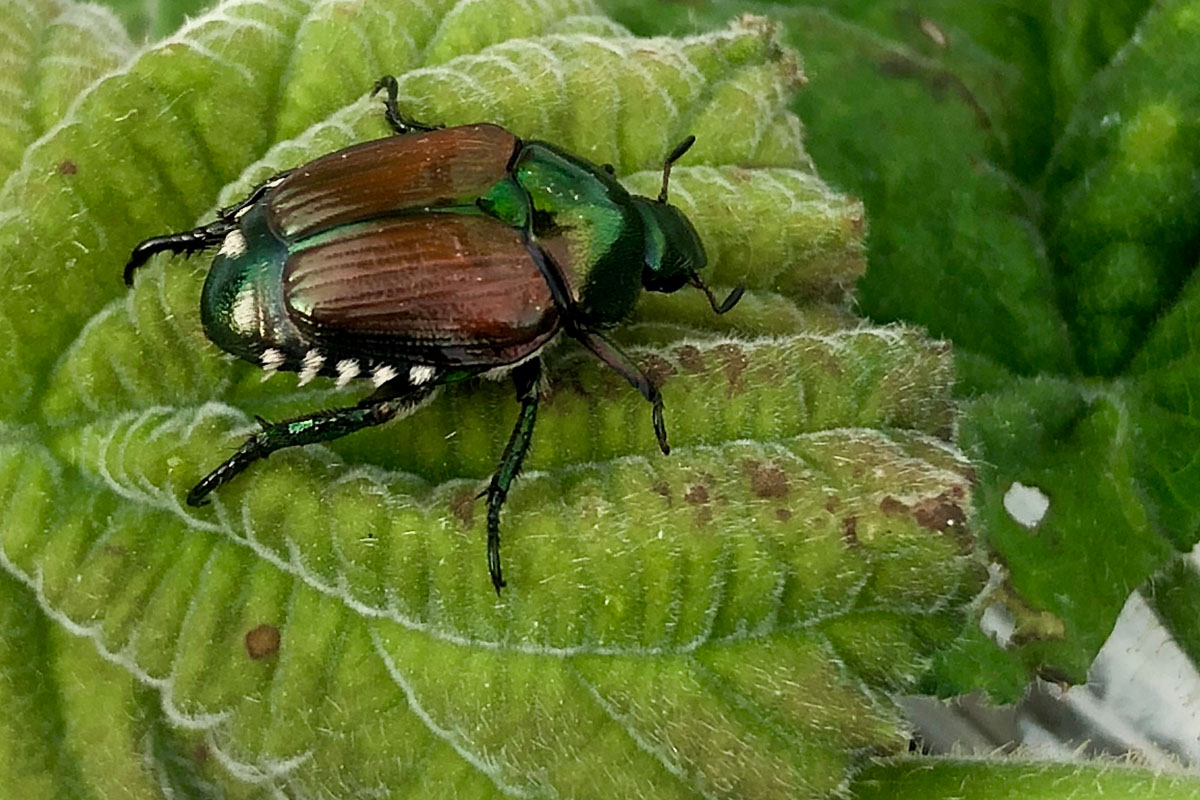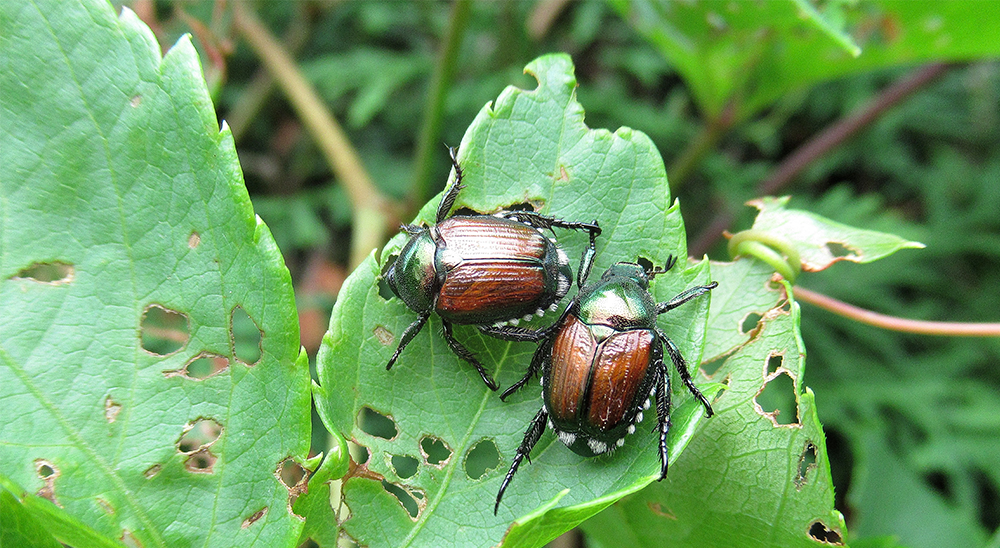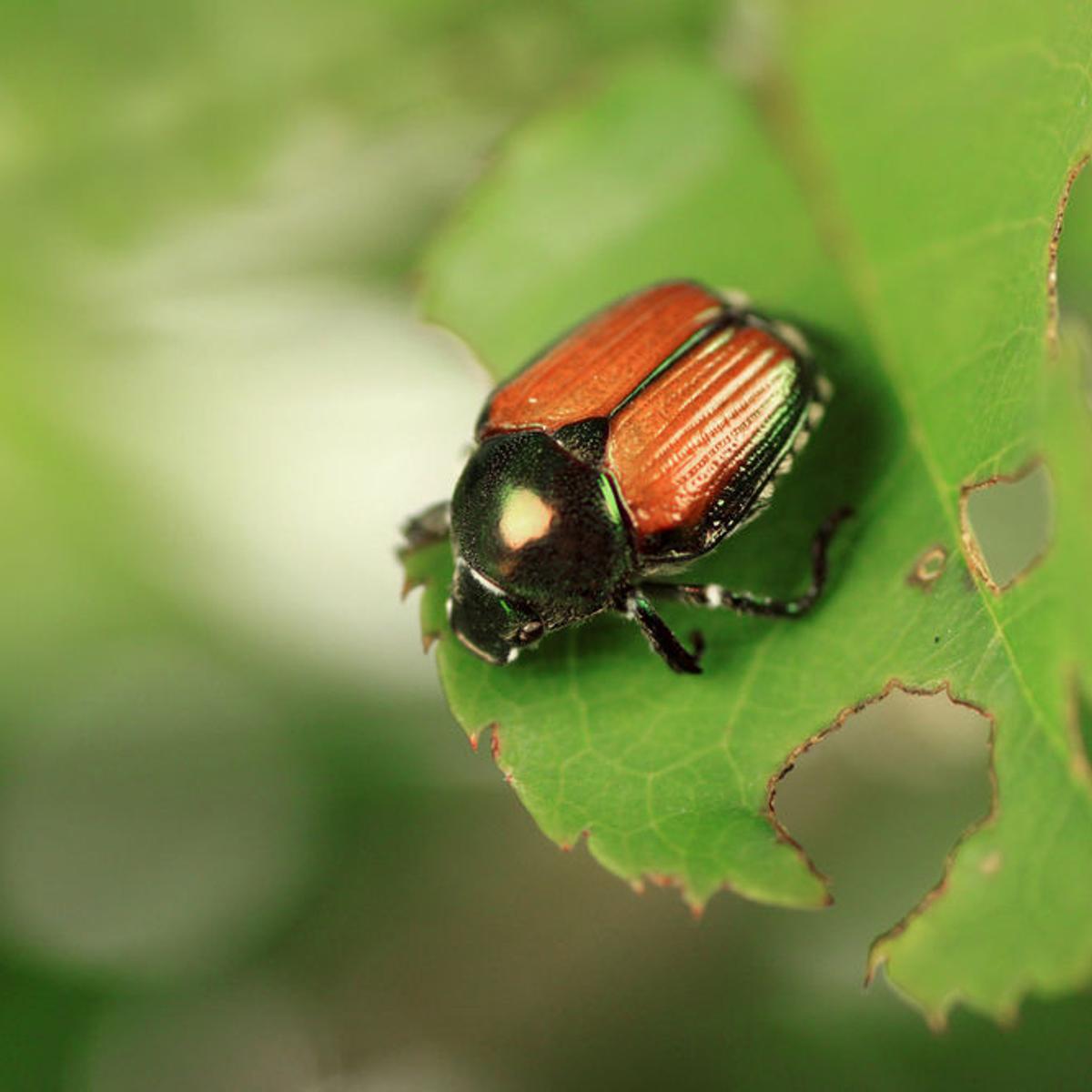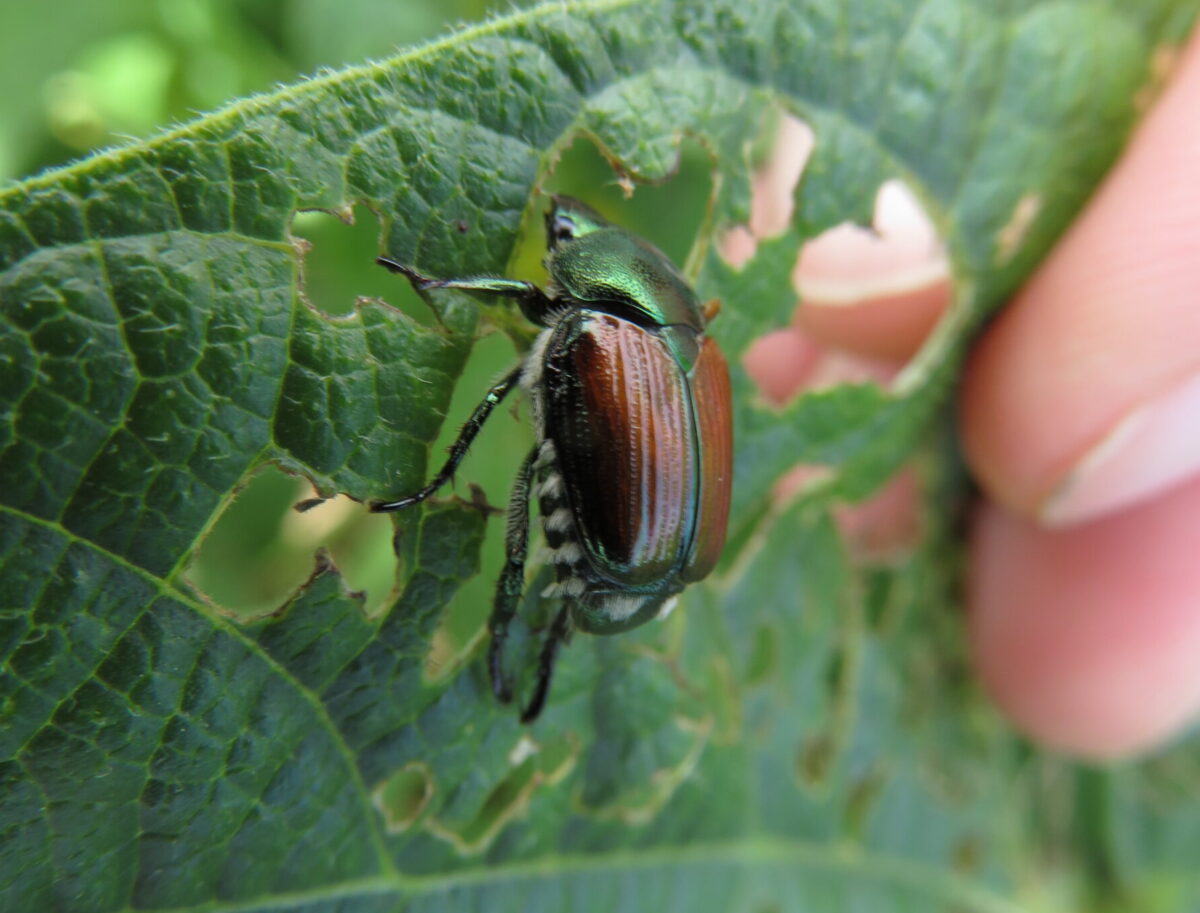japanese beetle life cycle ontario
Thus for the usual JB pupation window between May 15. The Japanese beetle adult an attractive pest.

Japanese Beetle Control The Good Earth Garden Center
Adults emerge from the soil in late June through mid-July feeding actively in sunny locations for 30-45 days.

. Japanese beetles cause leaves to appear skeletonized. In cultivated soils this may be deeper. Up to 25-30 cm.
One female will lay eggs at. Adult females lay eggs in moist sod in July. Adult females lay eggs in moist sod in July.
The grubs will surface and the birds will love you. In spring grubs move up near the soil surface to finish feeding and pupate into adult beetles. The immature stage of the Japanese beetle the white grub typically has a three year life cycle.
A temperature of 21C and. Get Rid of Grubs. Grubs will grow in length as they feed and mature.
For JB our registered soil-applied pesticides are going to have much less effect against the pupal and egg stages. Our female JBs begin laying her eggs in July. Within 46 weeks of breaking hibernation the larvae will pupate.
Japanese Beetle Life Cycle. However in Ontario complete development of the beetle has only been observed on. OMAFRA Factsheet Japanese Beetles in Nursery and Turf Japanese Beetle Life Cycle Beetles emerge from the soil in late June or early July begin flying when the temperature is about 21C.
Orkin Termite Treatment Pest Control Exterminator Service. The egg is laid by the female Asian longhorned beetle in a notch that she chews into the bark of a tree. Given that adult beetles fly you will need to reapply annually and hope that your neighbours do likewise to put much of a dent in the population.
There is only one generation per year. Adults feed on leaf material above ground. Spray once each week until no more grubs surface.
Japanese Beetle Life Cycle. They are in different stages during their life cycle. During the summer feeding period females intermittently leave plants burrow about 3 inches into the groundusually into lawnsand lay.
After burrowing the female beetle then lays a single egg. Adults emerge from late June into summer. In the grub stage of late spring and fall beetles have two life cycles per season spray the lawn with 2 tablespoons of liquid dishwashing soap diluted in 1 gallon of water per 1000 square feet.
Consult the life cycle chart for timing or visit the Iowa. Japanese beetle larvae have a V-shaped series of bristles on their raster the underside of the tip of the abdomen. Eggs hatch within a week or two and tiny grubs emerge.
Applying nematodes in the. Timing Nematode Treatments to JB Life Cycle July to September. Beetles emerge from the soil in late June or early July begin flying when the temperature is about 21C reach their peak in late July and August then gradually disappear.
Life cycle of Japanese beetles. Most of the beetles life is spent as a larva with only 3045 days spent as an imago. They feed on foliage and mate during the day.
Japanese beetle larvae are annual white grubs. Females excavate soil cavities several inches deep for their eggs which they lay in. Japanese beetle grubs spend the winter underground in the soil of lawns pastures and other grassy areas.
A typical cluster of Japanese beetle eggs. Adult beetles start to emerge from the ground in late June or early July. The grubs are C-shaped and approximately 125 inches when fully grown.
They can fly up to several miles to feed. Lack of snow cover may increase larval mortality. These hatch and the small larvae begin feeding.
However most of the damage to ornamentals and turf grass happens. Maples Acer birches Betula poplars Populus willows Salix Species identification and life cycle. Larvae live in the soil where they feed on plant.
The beetle only appears in midsummer and is active for six to eight weeks before laying a batch of eggs in lawns or grassy areas. Applying nematodes in the spring and fall when they live in your soil as grubs can kill the problem before they emerge as adult beetles. In September as soils begin to cool grubs move deeper into the soil and remain where the soil is about 10C at a depth of about 15-25 cm.
Both as adults and as grubs the larval stage Japanese beetles are destructive plant pests.

Pest Alert Japanese Beetle What You Need To Know Mgabc

Japanese Beetles Coming Soon To A Plant Near You Fight Back

Get Rid Of Japanese Beetles And Take Your Garden Back

Controlling Japanese Beetles Aphids Ants And Caterpillars Royal City Nursery
Life Cycle Of The Japanese Beetle Including A Eggs David Cappaert Download Scientific Diagram
Japanese Beetles In Nursery And Turf

Pest Alert Japanese Beetle What You Need To Know Mgabc
Notes On Blueberry Diseases White Grub Complex

Japanese Beetles Coming Soon To A Plant Near You Fight Back

How To Control Japanese Beetle Heeman S

Japanese Beetle Control 2021 Considerations Onfloriculture

How To Control Japanese Beetle Heeman S

How To Control Japanese Beetle Heeman S

Eco Talk As Japanese Beetles Return Tips On Stopping Them Lifestyles Auburnpub Com

Japanese Beetles Have Started To Emerge Onnurserycrops Blogonnurserycrops Blog

Japanese Beetles Coming Soon To A Plant Near You Fight Back

Japanese Beetle Dry Bean Agronomy

How To Prevent Japanese Beetles Garden Making
Problems With Japanese Beetles Ontario Hop Growers Association